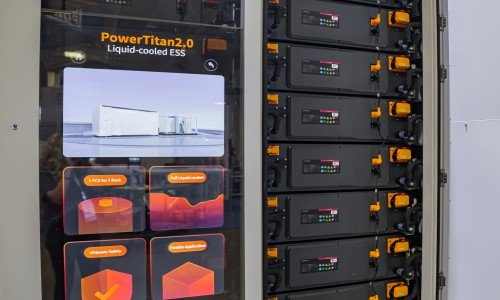
When it comes to choosing the right battery for energy storage, electric vehicles (EVs), or other applications, two popular lithium-based battery technologies are Lithium-Ternary and LiFePO4 (Lithium Iron Phosphate) batteries. Both types offer distinct advantages depending on the application, energy needs, and performance expectations. This article will compare Lithium-Ternary and LiFePO4 batteries across various factors such as chemistry, energy density, lifespan, cycle life, safety, cost efficiency, and environmental impact, helping you determine which is the better option for your specific needs.
Lithium-Ternary and LiFePO4 batteries each have their strengths and weaknesses. Let’s break down the key differences to help you make an informed decision.
What Are the Key Differences Between Lithium-Ternary and LiFePO4 Batteries in Terms of Chemistry?
The fundamental chemistry of a battery dictates its performance, energy storage capacity, and application suitability. Lithium-Ternary and LiFePO41 batteries are based on different materials that affect their characteristics.
Let’s compare the chemical composition of Lithium-Ternary2 and LiFePO4 batteries to understand their differences.

Chemistry Comparison
-
Lithium-Ternary Batteries:
- Chemistry: Lithium-Ternary batteries use a combination of lithium nickel manganese cobalt (NCM) or lithium nickel cobalt aluminum (NCA) as the cathode material, along with a lithium-based anode. This blend of materials results in a battery with a high energy density and a relatively high voltage.
- Energy Output: The ternary composition (nickel, cobalt, and manganese or aluminum) allows for high energy output, which makes these batteries suitable for applications requiring high power, such as electric vehicles (EVs) and high-performance devices.
-
LiFePO4 Batteries:
- Chemistry: LiFePO4 batteries use lithium iron phosphate as the cathode material, with graphite as the anode. This chemistry is more stable and less reactive compared to Lithium-Ternary batteries, offering excellent safety but at the cost of a slightly lower energy density.
- Energy Output: While LiFePO4 batteries are more stable and safer, they have lower energy output compared to Lithium-Ternary batteries, making them better suited for applications where safety and longevity are more critical than raw energy density.
Conclusion: The key difference in chemistry lies in the materials used for the cathode. Lithium-Ternary batteries offer higher energy density and power output, making them ideal for high-energy applications. LiFePO4 batteries, on the other hand, offer stability and safety with a slightly lower energy density.
How Do Lithium-Ternary and LiFePO4 Batteries Compare in Terms of Energy Density and Capacity?
Energy density and capacity are essential for determining how much energy a battery can store and how long it can power an application. This directly affects the size, weight, and performance of the battery in real-world applications.
Let’s compare the energy density and capacity of Lithium-Ternary and LiFePO4 batteries.

Energy Density and Capacity
-
Lithium-Ternary Batteries:
- Higher Energy Density: Lithium-Ternary batteries have a higher energy density, typically ranging from 150 Wh/kg to 250 Wh/kg. This allows them to store more energy in a smaller and lighter package lithium ternary battery energy density.
- Capacity: These batteries are able to provide high capacity in relatively compact sizes, making them ideal for electric vehicles and high-performance storage applications where space and weight are important lithium ternary battery capacity.
-
LiFePO4 Batteries:
- Lower Energy Density: LiFePO4 batteries typically have an energy density of 90 Wh/kg to 160 Wh/kg. While this is lower than that of Lithium-Ternary batteries, it still provides sufficient capacity for most residential and renewable energy storage applications LiFePO4 battery energy density3.
- Capacity: Despite the lower energy density, LiFePO4 batteries are still capable of providing reliable storage capacity, but they are often larger and heavier compared to Lithium-Ternary batteries for the same energy output LiFePO4 battery capacity4.
Conclusion: Lithium-Ternary batteries offer higher energy density and are more suitable for high-capacity applications where space and weight are critical, such as in electric vehicles. LiFePO4 batteries offer a lower energy density but are still effective for many residential and storage applications where safety and longevity are prioritized.
What Are the Lifespan and Cycle Life Differences Between Lithium-Ternary and LiFePO4 Batteries?
Lifespan and cycle life refer to how many charge and discharge cycles a battery can undergo before its capacity begins to degrade. These metrics are crucial for determining the long-term value and sustainability of the battery.
Let’s compare the lifespan and cycle life of Lithium-Ternary and LiFePO4 batteries.

Lifespan and Cycle Life Comparison
-
Lithium-Ternary Batteries:
- Lifespan: Lithium-Ternary batteries typically last around 8 to 12 years, depending on usage and maintenance. However, their lifespan can be shorter if they are subjected to high temperatures or frequent deep discharges lithium ternary battery lifespan5.
- Cycle Life: Lithium-Ternary batteries generally offer around 1,000 to 2,000 cycles. Their cycle life is shorter compared to LiFePO4 batteries, especially if they are regularly deep cycled lithium ternary battery cycle life.
-
LiFePO4 Batteries:
- Lifespan: LiFePO4 batteries have a longer lifespan, typically lasting 12 to 15 years or more, making them a more durable option for long-term energy storage LiFePO4 battery lifespan6.
- Cycle Life: LiFePO4 batteries offer a significantly higher cycle life, often ranging from 3,000 to 5,000 cycles. This makes them ideal for applications requiring regular charge and discharge cycles, such as off-grid solar systems LiFePO4 battery cycle life.
Conclusion: LiFePO4 batteries have a longer lifespan and higher cycle life than Lithium-Ternary batteries, making them more suitable for long-term energy storage where durability and frequent cycling are important.
Which Battery Type Offers Better Safety, Cost Efficiency, and Environmental Impact?
Safety, cost efficiency, and environmental impact are crucial factors when choosing between battery types, especially for energy storage applications that need to be sustainable and safe.
Let’s compare the safety, cost efficiency, and environmental impact of Lithium-Ternary and LiFePO4 batteries.

Safety, Cost Efficiency, and Environmental Impact
-
Lithium-Ternary Batteries:
- Safety: Lithium-Ternary batteries have a higher energy density, but they are also more volatile and susceptible to thermal runaway, which can lead to overheating or fires if not properly managed. They require advanced management systems and safety mechanisms lithium ternary battery safety7.
- Cost Efficiency: Lithium-Ternary batteries are more expensive upfront but provide high performance and energy density, which can make them more cost-effective in applications where high energy output is required, such as EVs and high-performance storage.
- Environmental Impact: The production of Lithium-Ternary batteries has a higher environmental impact due to the mining and processing of cobalt, nickel, and other materials, which can have significant ecological consequences. Recycling these batteries can also be more challenging.
-
LiFePO4 Batteries:
- Safety: LiFePO4 batteries are known for their safety and stability. They are less prone to thermal runaway and are much safer than Lithium-Ternary batteries, making them ideal for residential and renewable energy storage applications.
- Cost Efficiency: LiFePO4 batteries are generally more affordable than Lithium-Ternary batteries, especially when considering their longer lifespan and higher cycle life. They provide better cost efficiency over time, especially in stationary energy storage systems.
- Environmental Impact: LiFePO4 batteries are more environmentally friendly because they do not rely on cobalt or nickel, making them less harmful to the environment. They are also easier to recycle, reducing their overall ecological footprint.
Conclusion: LiFePO4 batteries offer better safety, cost efficiency, and environmental impact. They are a more sustainable choice for long-term energy storage applications, while Lithium-Ternary batteries excel in high-performance settings where energy density and power output are the top priorities.
Conclusion
Both Lithium-Ternary and LiFePO4 batteries have their strengths, and the choice between them depends on the specific application and your energy needs.
- Lithium-Ternary Batteries: Offer higher energy density and better performance for applications that require high power and compact size, such as electric vehicles and high-performance energy storage. However, they come with higher safety risks, shorter cycle life, and higher environmental costs.
- LiFePO4 Batteries: Provide better safety, longer lifespan, and superior cost efficiency, making them the ideal choice for residential energy storage, off-grid systems, and applications where longevity and environmental impact are priorities.
Ultimately, LiFePO4 batteries are better suited for long-term, safe, and cost-efficient energy storage solutions, while Lithium-Ternary batteries are best for high-performance applications that demand more power and energy density.
-
LiFePO4 batteries overview
Explore the properties and applications of LiFePO4 batteries, known for their stability and safety. ↩ -
Lithium-Ternary batteries overview
Learn more about Lithium-Ternary batteries and their high energy density, suitable for high-power applications like electric vehicles. ↩ -
Learn about the factors that affect energy density in LiFePO4 batteries and their impact on storage capacity. ↩
-
Discover why LiFePO4 batteries are still suitable for home energy storage despite having lower energy density. ↩
-
factors affecting lifespan of lithium ternary batteries
Learn how usage patterns, temperature, and deep discharges impact the longevity of lithium ternary batteries. ↩ -
reasons for longer lifespan of LiFePO4 batteries
Understand the properties of LiFePO4 batteries that contribute to their extended lifespan and durability. ↩ -
why lithium ternary batteries are more volatile
Learn about the factors that contribute to the volatility and thermal runaway risks in lithium ternary batteries. ↩



